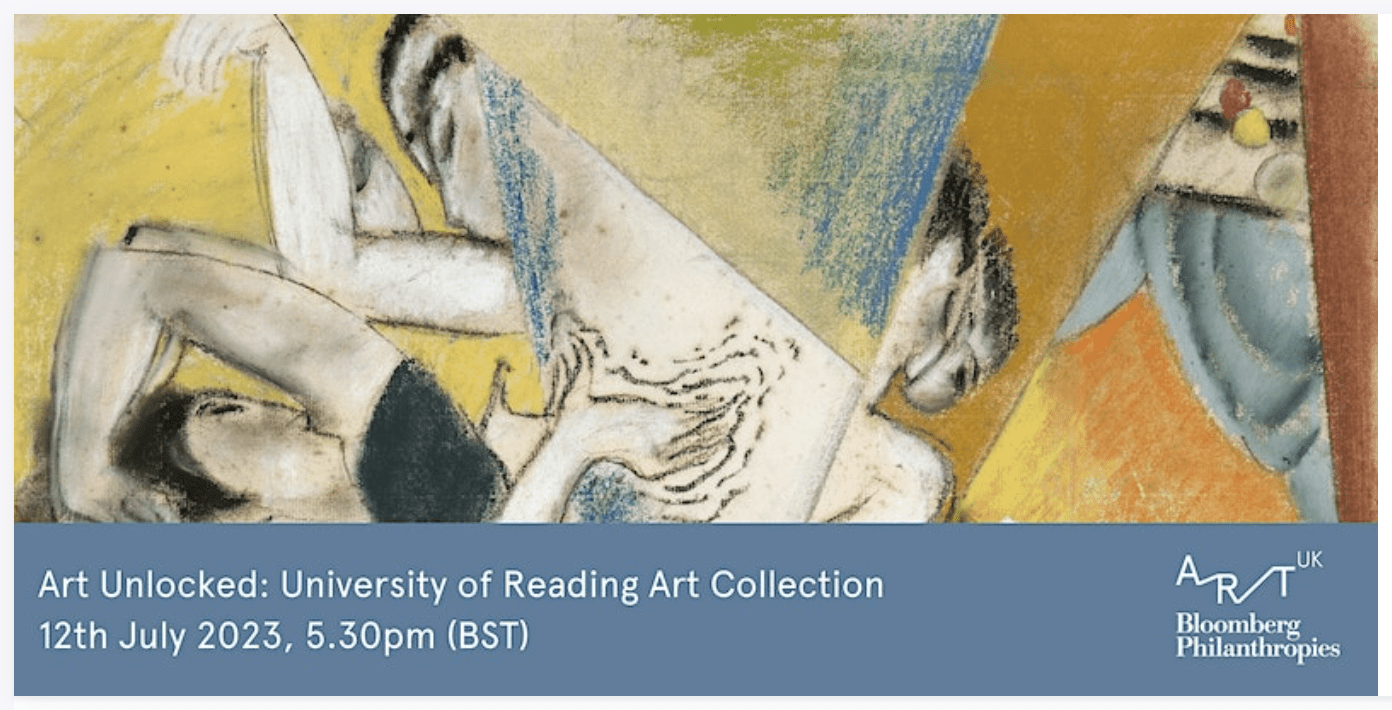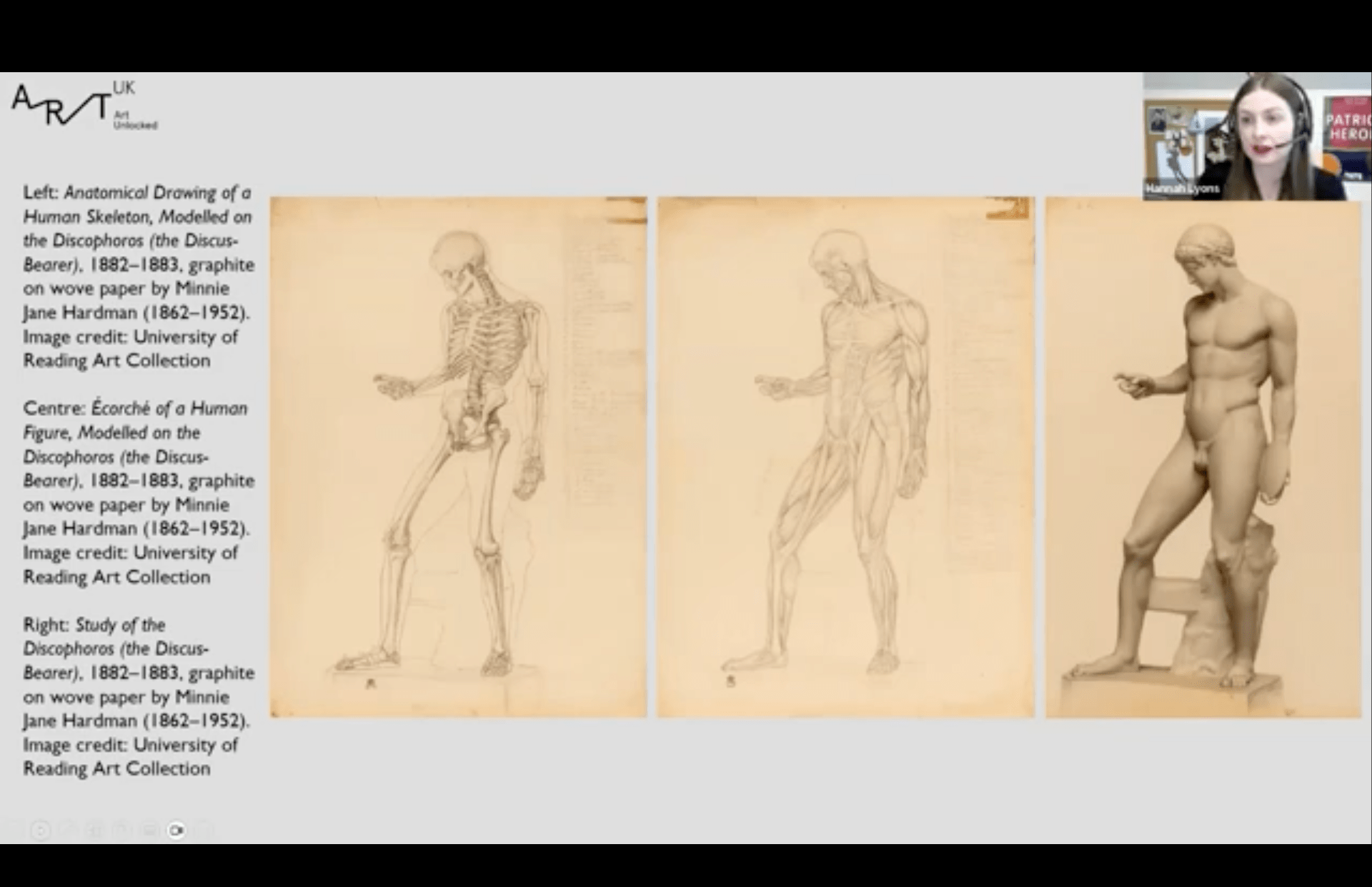
On Wednesday 12th July, Dr Hannah Lyons, Curator of Art at Reading University, gave a talk with the title ‘Art Unlocked: University of Reading Art Collection’. The presentation was hosted by Art UK in collaboration with Bloomberg Philanthropies.

During an analysis of the drawings of Minnie Jane Hardman (1862-1952), of which there are about 125 in the Reading collection, Dr Lyons pointed out that Hardman had enrolled at the Royal Academy of Art barely more than 20 years after first woman had been accepted there.
Laura Herford
The woman in question was Laura Herford (1831-1870) and she gained admission to the Royal Academy in 1860 by giving her name simply as L. Herford; it was assumed that she was a man.
The name Herford has previously appeared in four posts on this blog, and it occurred to me that Laura Herford might have been related to Caroline Herford who had been appointed to University College, Reading in 1909 as the College’s first Lecturer in Secondary Education.
John Herford(1789-1855) & Sara Smith Herford (c. 1818-1870)
To establish the family connection we need to go back to John Herford, a Coventry businessman who married the landscape artist and educationalist Sarah Smith Herford. They moved to Altrincham, Cheshire (now part of Trafford), in 1822 where Sarah founded the Unitarian Boarding School for Girls, and John set himself up as a wine and spirit wholesaler in Manchester. John appears to have had a varied career that also included stockbroking, insurance, pharmacy and membership of the Manchester Town Council.
Of their surviving children the most relevant here are William Henry Herford (1820-1908) (see below) and, of course, Laura Herford (1831-1870) who, as already noted, was the first woman to be enrolled at the Royal Academy of Art. Tragically, Sara died giving birth to Laura.
Another daughter of William and Sara was Mary Chance Herford, the mother of Helen Allingham a gifted watercolour painter. Thus, three generations of women (Sara Smith Herford, Laura Herford and Helen Allingham) achieved distinction as artists. Charles Herford, the nephew and biographer of William Herford commented thus:
‘…the distinguished career of Laura Herford (who first obtained the opening of the Academy Schools to women), and in the next generation, of her niece, Mrs. Allingham, indicate a strain of not inconsiderable artistic endowment in the family. (Herford, C. H., 1916, p. 30).
William Henry Herford (1820-1908
William, the older brother of Laura Herford, was an innovative educationalist and clergyman. He founded Lady Barn House School in Fallowfield, Manchester in 1873, a co-educational day school for pupils aged from seven to thirteen. William’s approach to running his school was strongly influenced by the ideas of Froebel and Pestalozzi. His espousal of co-education and experiential learning with the child at its centre was controversial at the time and produced shock in some quarters.

Caroline Herford (1860-1945)
William Herford retired in 1886 at the age of 67 and passed on the headship to his second daughter Caroline who continued to run the school according to her father’s ideals.
This continued until 1907 when she gave up the headship to care for her father in his old age. A year after William’s death in 1908 she accepted the post of Lecturer in Secondary Education at University College, Reading.

So there is indeed a family connection between Caroline and Laura Herford; Caroline was Laura’s niece and the cousin of Helen Allingham.
Thanks
To Dr Hannah Lyons for permission to use the image from her presentation.
To Dan Slade, Deputy Head of Lady Barn House School, for information, documents and his Powerpoint presentations about the Herford family.
Sources
Dictionary of Unitarian & Universalist Biography: Brooke Herford.
Herford, C. H. (1916). A memoir of W. H. Herford. In W. H. Herford, The student’s Froebel (revised edition). Bath: Isaac Pitman.
Lady Barn House School website: https://www.ladybarnhouse.org/597/how-lady-barn-started
Sadler, M. E. (revised by Curthoys, M. C.) (2004). Herford, William Henry. Oxford Dictionary of National Biography. Oxford: OUP.

